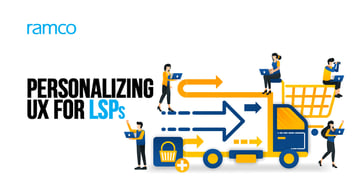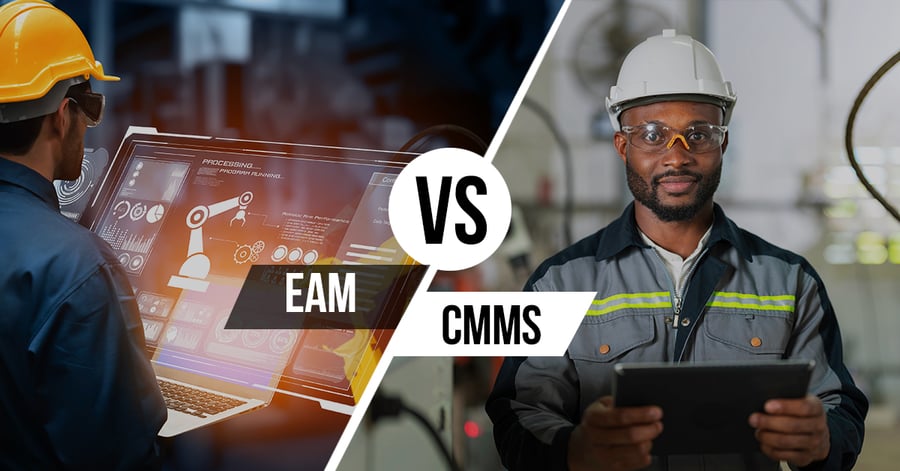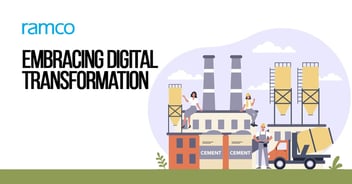

When it comes to asset maintenance and management, every business owner wants to be doubly sure about the enterprise asset management software they deploy. This is because assets are pivotal to the success of a business and mismanagement of the same may cost the business heavily.
While researching on the best enterprise asset management software, you will essentially come across EAM and CMMS. This two software are different and in fact, serve different purposes. Therefore, it is essential to understand their features and benefits properly before selecting any of them for your business. Let’s begin with the basics.
What is EAM?
EAM, which stands for Enterprise Asset Management, is a software that generally focuses on preserving the assets for their entire lifecycle and maximizing their potential. Oftentimes, it is considered to be CMMS’s superset that offers a higher specificity of the asset targeting features.
EAM consolidates data from various sources, assets, and geographical locations into single place, allowing the users to access the data from anywhere. It also connects the information that is gathered on the assets to the strategy and performance of the organization. EAM software is used by the maintenance managers. However, as EAM offers great visibility into the KPIs across the organization, it is also used by business leaders, data analysts, materials management, procurement and accounting departments.
What is CMMS?
CMMS, which stands for Computerized Maintenance Management, is a software which mainly focuses on maintenance, coordination, and communication. This mainly helps automate and streamline inventory, maintenance scheduling, managing work order, and maintaining database on asset information. It is used by maintenance professionals and facility managers.
EAM vs. CMMS – The Face off
1. Varying Objectives
The primary objective of enterprise asset management software is to optimize the utilization of assets and their quality while reducing the costs. It helps in achieving enhanced flexibility in terms of maintaining and operating assets at lower expenses. Additionally, it ensures effective and full utilization of assets as it tracks assets right from its procurement and helps in finding non-performing assets. EAM Solution comes inbuilt with reliability analysis features which helps in taking the right decisions at right time.
In contrast, CMMS assists in curating accurate and precise information for decision making in maintenance activities. CMMS puts great emphasis on preventive maintenance instead of other maintenance and plays an important role in asset management and inventory management. Thus, providing a great help in increasing productivity and saving money.
2. Limited vs. Lifecycle Approach
While CMMS aims to increase the life of the assets, EAM focusses on leveraging the maximum potential of the asset throughout its lifecycle. EAM reports contain detailed metrics. EAM takes care of entire lifecycle of assets starting from procurement & commissioning till it retires, on the other hand CMMS focus is when asset is already commissioned.
3. Automation vs. Strategic Analysis
The idea behind CMMS platforms is to replace the manual maintenance records with the automated software, helping lower maintenance cost.
However, enterprise asset management software places its focus on the interdependencies between the assets and how their alliance affects the enterprise strategy. The EAM software recognizes asset management’s role in the big picture and utilizes consolidated data for lifecycle cost analysis, root cause analysis and more.
4. Preventive vs. Predictive Maintenance
While both EAM and CMMS platforms deal with preventive maintenance, various EAM software solutions take this one step further, and enable analytics-driven predictive maintenance via advanced technologies like IoT sensors, monitoring through Drones etc.
How to Choose the Right EAM for Your Business?
The motive behind implementing the asset management software in an organization is to save money and time. After all, you need a software that is a perfect fit for your asset management needs.
However, before you select EAM or CMMS, you need to answer a few questions:
- Which assets does your business wants to monitor?
- What is the portfolio of all assets which are important for your business - Machinery, vehicles and facilities?
- Alignment of Asset maintenance & management with organizational goals
- What are existing practices of asset maintenance & management in your organization?
- How complex and differentiated are your processes? It determines the level of customization required.
- Which existing enterprise systems are in place already? It is very important to select the EAM Solution which can be integrated easily with existing systems.
- What features do you require?
- Do you have the spending and opportunity plan to actualize?
- What challenges are you attempting to solve?
The above questions help determine the fundamental question of EAM versus CMMS. In case of large enterprises with huge asset deployment across geographies EAM could be a good choice. While in asset-light and medium sized companies, CMMS can handle the maintenance automation and extract maximum savings with a lesser investment. The bottom line is if the expectation from the software is simply to track and manage maintenance activities, CMMS is the best bet. However, if you have large operations and smarter decision-making is the need of the hour, then EAM might be the one for you.
ERP Software in Integrating EAM and CMMS for Scalable Asset Strategies
In modern enterprises, especially those operating at scale or across geographies, the convergence of enterprise asset management software and maintenance systems within a robust ERP system is becoming a strategic imperative. While EAM and CMMS cater to different layers of asset-related operations, a well-architected ERP environment can unify both under a common digital framework. This integration enables seamless data flow, cross-functional collaboration, and better decision-making.
Unified Visibility and Control
With the rise of cloud ERP solutions, organizations no longer need to manage EAM and CMMS in silos. These platforms offer centralized visibility into asset health, lifecycle stages, and maintenance schedules, delivering operational continuity from procurement to decommissioning. Integrating EAM and CMMS into the ERP software enhances real-time tracking, enabling predictive analytics and allowing enterprises to proactively mitigate asset failures.
Standardized Workflows and Compliance
An integrated ERP system ensures that workflows, from service requests to procurement orders—adhere to enterprise-wide policies and compliance frameworks. For example, automated triggers from CMMS for maintenance tasks can sync with the procurement module within the ERP to replenish spare parts or schedule technician resources, streamlining operations and reducing downtime.
Scalable, Cloud-Based Infrastructure
Adopting cloud ERP solutions empowers businesses with on-demand scalability and global accessibility. This is especially critical for industries with distributed asset bases such as aviation, utilities, and manufacturing. With a mobile-enabled and cloud-native ERP software backbone, asset data becomes more accessible to decision-makers, field technicians, and compliance teams alike.
In essence, choosing ERP platforms that offer native integration of EAM solutions and CMMS capabilities ensures that organizations don’t just manage assets, they optimize them strategically. This holistic approach turns operational complexity into competitive advantage through smarter asset utilization, cost control, and long-term performance visibility.
Once you’ve understood your asset management requirements, you can move to choosing the right asset management software solution for your organization. It is highly recommended to consider deploying Ramco’s ERP software which offers numerous complementary modules including enterprise asset management software. It helps make your asset-intensive business agile and lean and proves to be the best-in-class solution for planning, managing and maintaining your assets on a mobile-ready and cloud platform.
Frequently Asked Questions (FAQs)
Enterprise asset management (EAM) involves the management of mission critical assets of an organization throughout each asset's lifecycle. EAM is used to plan, optimize, execute, and track the needed maintenance activities with the associated priorities, skills, materials, tools, and information. The aim is to optimize the quality and utilization of assets throughout their lifecycle, increase productive uptime and reduce operational costs.
Enterprise asset management (EAM) involves the management of the maintenance of physical assets of an organization throughout each asset's lifecycle. EAM is used to plan, optimize, execute, and track the needed maintenance activities with the associated priorities, skills, materials, tools, and information.
The software helps in effective maintenance of assets through preventive, predictive, shutdown and breakdown maintenance strategies. The system also helps enterprises mitigate equipment risks by enhanced safety standards. The streamlined operations and improved asset performance helps organizations increase their investment effectiveness.
EAM is important because it helps organizations track, assess, manage and optimize asset quality and reliability. Asset intensive Organizations have hundreds, thousands, even millions of assets which needs to be maintained to maximize / optimize life of these assets to increase the return on investment.
The key features of effective EAM are:
- Work management.
- Maintenance Strategies (Preventive/ Predictive / Breakdown / Shutdown).
- Planning and scheduling.
- Supply chain management.
- Health and safety.
- Mobility.
- Analytics.
- Improved Asset Health at reduced cost through data driven maintenance Programs
- Complete visibilityon entire maintenance data across Equipment, across Models, across Branches to aid in analysis & decision making such as to Repair or Replace the Equipment
- Insightful analysis of Inspection Data to improve customer satisfaction
- Effective maintenance management enhanced by predictive maintenance and inbuilt analytics
- Increased reliability and safety, keeps complete track of all the inspections & calibration schedules
- Mobile Application enables users to execute work while “in the field” leading to minimized non-productive time and increased productivity and reduces duplication of work and human errors in recording information.
- Quick turnaround time through Actionable Notification & Alerts for every process in real time and accessible anytime and anywhere.
- Improved Regulatory Part of asset management involves the implementation of better O&M practices, which can significantly improve compliance.
Asset Intensive companies under the following Industries :
- Ports
- Cement and Mining
- Utilities
- Fleet Maintenance
- Equipment Rental
- Other Manufacturing
- Real Estate & Infrastructure
- Power Generation
Contact us for a meeting and schedule a demo
This differs on case to case basis, based on the type of installation and unique industry specific requirements. Contact us for a meeting and schedule a demo.
This differs on case to case basis, based on the type of installation and unique industry specific requirements. Contact us for a meeting and schedule a demo.
Stay Connected, follow us on LinkedIn / Twitter to know more about EAM Software latest trends.


